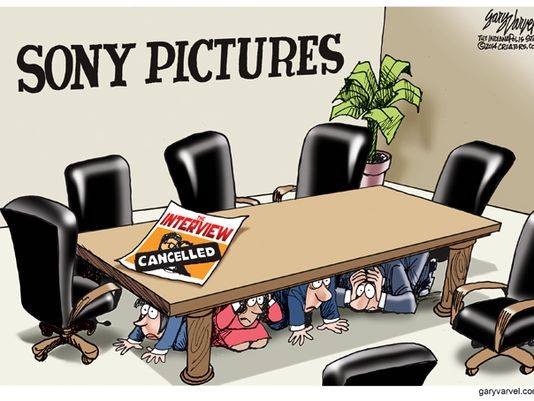
Indigenous representation in the media has long been debated, with many arguing the key distinction between authentic and stereotypical representation. One recent example arose when the television show Yellowstone debuted in 2017. It came to the attention of many Indigenous actors that Monica, a Native character, was not being portrayed by an Indigenous person. This outraged actors like Adam Beach (Saulteax Tribe), leading him to call for a boycott of the show altogether. Beach’s boycott aimed to call out the lack of authenticity in Yellowstone’s portrayal of an Indigenous story. Following Beach’s argument against Yellowstone, this article will examine why it’s not enough to see Indigenous characters represented on screens when they’re not given autonomy over their stories, and how this can contribute to the larger issue of crime against Native Americans.
Before delving into the issues of Yellowstone, I’ll first zoom out to Indigenous representation as a whole. In line with the violent views of Native Americans in pioneer-settler times, much of early Hollywood Indigenous representation was grossly stereotypical. Native Americans were often seen as the violent, animalistic foils to the heroic, civilized cowboys in Wild West shows and movies. As representation continued, more efforts were made to tell Indigenous stories. With such stories coming from a still almost exclusively white Hollywood, though, we ended up with films like Pocahontas, Dances with Wolves, and Peter Pan (Tiger Lily and Great Big Little Panther), and the image turned from violent savage to exotic other. More Indigenous actors, writers, and filmmakers have since entered the industry, giving us Indigenous-led projects like Drunktown’s Finest and Mekko. However, these films have largely flown under the mainstream radar, and Hollywood’s majority is still white. Thus, a logical step toward more Indigenous representation would be to feature Native American actors in Native American roles — specifically when Indigenous people do not lead projects. This is where the issues with Yellowstone arise.
Casting a non-Native woman in Yellowstone is a mere example in a much larger web of representation issues of autonomy and systemic oppression. Yellowstone’s Monica is portrayed by actress Kelsey Asbille, who has claimed both Cherokee and Southeast Asian heritage. After another Indigenous actress, Sonny Skyhawk inquired with the Cherokee Nation about Asbille, though, no record of her family heritage appeared. What angered Adam Beach (who called for the boycott) the most about this situation was the number of Indigenous actresses in the industry who were snubbed of a job because of a false identity claim. Because of this casting choice, Indigenous people were not given the autonomy to accurately and authentically tell an Indigenous story. Given the violent oppression Native Americans have been subjected to because of stereotypes thrust upon them by society (and thus the media), Indigenous stories must be told by Indigenous people.
As an additional layer to the Yellowstone casting issue, the show features other Indigenous male characters that Indigenous actors portray, but the main Indigenous woman in the cast is non-Native. This highlights a crucial facet of the issue: intersectionality. Authentic Indigenous stories are already too infrequent in Hollywood, and this issue only compounds for Indigenous women, whose identities have long been both criminalized and victimized (think Missing and Murdered Indigenous Women).
As shown by the Yellowstone case study, Indigenous actors like Adam Beach have stressed the importance of story autonomy, so that representation can be authentic and harmful stereotypes are prevented. Without this authenticity, the film and television art form contributes to the ostracism, oppression, and criminalization of Indigenous people because the media is representative of larger social ideals. So, the next time you’re looking for a new show to watch, think critically about how Indigenous characters might be represented. Maybe you’ll opt for a show like Rutherford Falls or Reservation Dogs over Yellowstone, and look for actual Indigenous storytellers like Lily Gladstone, Sterlin Harjo, and Sydney Freeland.








Hi Olivia! It is frustrating and messed up that there aren’t real indigenous natives for roles in the television show “Yellowstone”. If the script has characters who are native, then why aren’t they looking for real indigenous women or men for them? The casting directors should do further research on the actresses who have claimed they’re indigenous instead of allowing people to play as a native. There should be more respect for indigenous natives. The U.S has affected them historically by trying to erase their traditions, tribes, people, and culture. So why are we continuing to erase them on television? Society should learn and see indigenous natives on the screen. The television show “Reservation Dogs” is one of my favorite shows with an authentic indigenous cast while being so funny. Another show I would recommend is “Little Bird,” which is made by PBS and exhibits the negative impact Canada had on native children. It is heartbreaking and informative about the Sixties Scoop in Canada, which had misplaced 50,000 children for adoption.
I appreciate you writing about the laziness of Hollywood in their representation a lot of the time. Since Hollywood is driven so much by profit, it often isn’t on their priority list to find the most fitting demographics for their characters. Representation matters deeply, and it’s reflected in the ways in which different cultures have been misrepresented within American media for years. This is simply one example of the many ways in which Hollywood has misrepresented contemporarily. It’s relatively invisible, but it’s easy to notice if a person is able to do their research on the topic. The way companies cut corners to produce simpler media is a crime in itself, and the intersectional element of representation cannot be ignored. It’s nice to see it confronted within popular TV shows that can’t quite nail it on their representation.